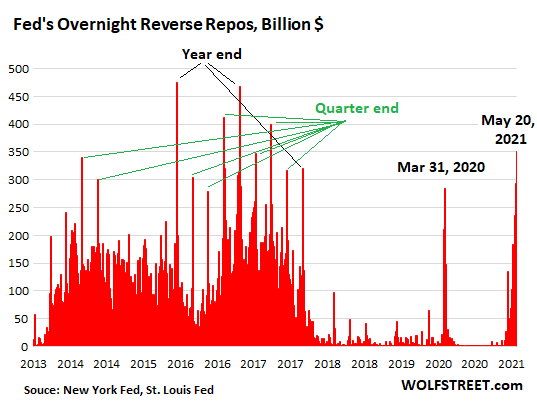
American SICO - 4.1 A Band-Aid Known as Reverse Repo
Balance at the overnight reverse repo program (RRP) at New York Fed has been rising very rapidly lately, especially in the past week (see chart below). The magnitude of its daily fluctuation is now large enough to affect the balance-sheet pressure at the big banks and consequently the price of risk assets. Thus, it is very useful to have a good understanding of the role that RRP plays in the financial plumbing system that convert fiscal/monetary policies into market price actions.
The goal of this note is to establish a couple of extremely important (and often completely misunderstood) features of Fed RRP:
The Fed started the current RRP back in late 2013 when prolonged QE3 finally caused an oversupply of bank reserve in the system. QE3 was tapered off gradually between Jan 2014 and Oct 2014. RRP is a temporary overnight asset swap, where Fed takes in bank reserves (or GSE "other account" balance), while posting collateral (UST) to RRP counterparties: Banks (commercial bank subsidiaries of bank holding companies), Primary dealers (dealer/broker subsidiaries of bank holding companies), GSEs (mostly FHLMC and FNMA), MMFs (government money market funds, independent or as a bank subsidiary). The counterparties get paid interest at RRP rate in the form of newly created bank reserve.
From Fed's perspective, RRP is somewhat akin to a temporary quantitative tightening: taking reserves away from banks and giving collaterals back to the private sector. And its strength/magnitude is determined by market participants (banks, GSEs and MMFs), giving the Fed a buffer to overrun QE without stressing the system, because the excess reserve would be absorbed by RRP in principle. This is important to the Fed, because it favors making very slow adjustment with months of forward guidance in order "not to spook the market".

















